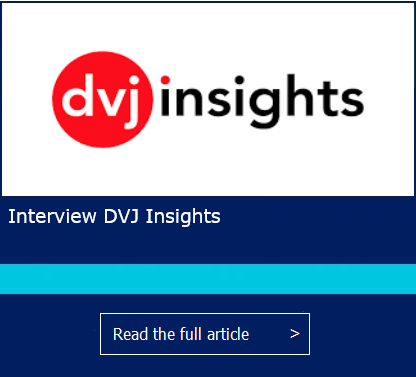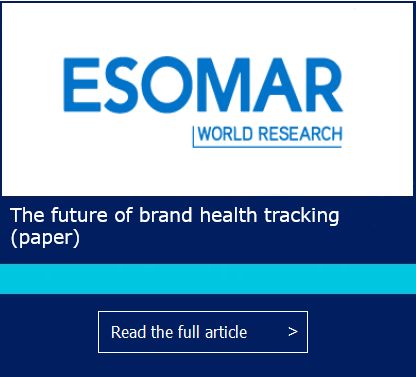Assessing modern brand health tracking
Editor’s note: Patrick Bruin owner and consultant at Marketing & Insights Consultancy (MIC), and Sjoerd Koornstra is partner at The House of Insights.
In 2021, our paper was selected by ESOMAR and its Congress Programme Committee for presentation. The paper put forward our views on best practices to ensure “fit-for-purpose” brand health tracking in the future based upon on our global experience managing international brands. Earlier this year, Jenni Romaniuk published the book “Better Brand Health,” which focuses on the measures and metrics for a “How Brands Grow,” by Jenni Romaniuk and Byron Sharp, world (including a downloadable template questionnaire). The book gives an extensive description of metrics, how to measure them and reasons why you should measure them. Additional data sources are discussed as substitutes for, or add-ons to, brand health tracking.
In this article we will describe how the contents of “Better Brand Health” compares to our work on the future of brand tracking. This will include discussing some specific metrics and measures mentioned in the book.
The foundation of a good brand health tracking system
The foundation of a good brand health tracking system will include some generic aspects and some specific aspects. The more generic ones are:
- Do consumers know me?
- Have consumers seen me?
- Do consumers like me?
- How often do consumers use me?
- What do consumers think about me?
- What is my overall fitness score (brand health/equity)?
- Do consumers prefer me over other brands?
We will discuss some striking points on these generic aspects but first let’s look at the main sampling requirement.
Sampling: Measurement of brand health should be among users, not buyers
“Better Brand Health” focuses on referring to people as “buyers” and classes them as non-buyers, light buyers and heavy buyers. However, we think that users are more important than buyers for the following reasons:
- A buyer is not necessarily a user. A buyer might receive instructions to buy specific brands. Especially in fast-moving consumer goods, buyers could be instructed to purchase specific brands without any involvement with the brand. In this case the buyer is just an order picker.
- Buyers who are not users are not able to evaluate the brand on specific usage characteristics. These specific usage characteristics, like bitter taste, are measured as attributes.
As an example, imagine a household with divided tasks. The wife is doing the washing, and the husband is doing the shopping. But the wife determines the brand and the washing powder product. So, when it comes to washing powder, the husband is just order picking. He, the buyer of the product, might not have a clue about the product.
You can find many examples of large companies choosing to conduct brand health tracking with users. For example, a large global beer company, which has brand health tracking in more than 120 countries, has measured only among users for decades. Also, global companies in carbonated soft drinks and tobacco typically measure brand health among users.
The importance of unprompted awareness
In Romaniuk’s book, unprompted awareness is not considered to be important for two main reasons:
- The number of brands mentioned by consumers are fewer than for prompted awareness.
- There is no guarantee that the same brand will be retrieved tomorrow.
We believe that unprompted measures like “top of mind” (the brand is the most present brand in the mind of the consumer) and “total spontaneous awareness” (the brand is actively present in the mind of the consumer) are important measures, especially in situations where you have to order a product without clear brand signage, as can happen in bars/restaurants. For example, brands that are top of mind will be ordered by name and ordered more than brands that are not. A product may be physically available, but if it is not top of mind for consumers it will not be ordered at all.
Let’s look at an example. A Dutch gin brand was launched in the U.S. after comprehensive market research. Although market research was quite promising, the brand was lacking awareness and was not ordered in liquor shops despite distribution availability. It was not top of mind for consumers.
Digging into brand health measures and metrics
In the book, Romaniuk explains measures and metrics for mental availability as “better” substitutes for top of mind. Below we describe several disadvantages.
Overall fitness score: “Better Brand Health” doesn’t refer to an overall fitness score – how a brand scores overall in the minds of consumers – like brand equity. The share of mind measure mentioned in the book for mental availability comes close. This measure is related to the share of category entry points. This is not an overall measure and rather contrived.
Consistency: The measurement framework should be consistent with decision-making about the way brands are managed. The measurement in the book is based upon the “How Brands Grow” framework, which is structurally adhered.
Frequency: The frequency should be in line with the ability to react by the organization. This aspect is neglected and left to the reader.
Comparable: The measurement should be comparable in time as well as between different markets and/or categories. This is one of the weak points in the book. The comparability in time is dealt with through a rather pragmatic approach (recalculating for changes in the brand list). Comparability between markets, a must for global brands, is not mentioned at all. More attention could have been paid to this subject.
Simple KPIs: The KPIs should be absolute with clear references, not relative, and simple and easy to understand. As an example, the Michelin star measurement is so strong and recognized because the level of a one-star restaurant is the same in every country. The mental availability metrics, like mental market share, mental penetration, network size and share of minds, do not meet these two requirements. These measures are all relative and calculated on category entry points. These category entry points can differ per category and per market. Calculations of these metrics require thinking power of the reader to digest.
Brand health is not the same as communication evaluation
Brand health is a reflection of all the brand signals in the market. To measure different marketing activities (advertising, sponsoring, etc.) in detail in a brand health tracking system is either too much to handle for respondents or too shallow. We strongly recommend limiting to the measurement of awareness of different touchpoints and sticking to that level. For example, do not show stills of commercials or take deep dives into certain touchpoints (like word of mouth) as is proposed in the book.
A good analytical software tool is essential
A “How Brands Grow” approach to marketing emphasizes connecting with non-buyers and light buyers. This requires flexible analysis of data from various groups, allowing for slicing, dicing and comparing across different time periods and markets. Treating brand health tracking the same way as other data sources and accessing the data with a BI tool without proper data preparation can lead to problems. The book doesn’t mention this, but we believe it should be taken seriously.
Let’s look at some high-level reasons why this is true.
Data often needs to be weighted for a representative picture, and certain groups may have been “boosted,” affecting the weighting.
- Respondents may not answer all the questions, resulting in missing values that need to be addressed.
- Surveys with a continuous nature conducted in multiple countries often have different measurement periods. Presenting a global view of brands in one dashboard requires pre-structuring data from different markets, time periods and user groups.
During a software review (https://www.moa.nl/softwarereview.html), we found that these issues often cause implementation problems in companies. Therefore, we recommend considering software providers that have already incorporated these functionalities.
The questionnaire should follow a logical flow
To obtain the highest quality answers, we strongly recommend following a simple and consistent flow when designing a questionnaire:
- Category usage.
- Brand awareness.
- Brand usage.
- Brand perception/image.
- Brand touchpoints awareness.
Respondents get confused when you start with awareness, follow with brand image and at the end brand usage as is done in the template questionnaire within the book. The flow in Romaniuk’s book is as follows: category screeners, brand awareness, attributes, attitude, WOM, marketing activities, category and brand buying. We also believe image can only be measured from brands people are aware of.
Final thoughts on “Better Brand Health”
The book gives a thorough view of measures and metrics for a “How Brands Grow” world. We have taken this world as a given without disputing it in this article. However, we believe the book has room for improvements concerning:
- Sample composition.
- Specific measures and focus.
- Design for comparability in time and between markets.
- Questionnaire structure.
This book is based on very thorough scientific and academic work done by thought leaders in the field of marketing. We feel, however, that it remains theoretical, despite its title and promise. For example, publications in respected industry organizations (congresses, websites, magazines) are not mentioned. Standardized tools from consumer insights agencies are also not discussed and this is emphasized by the fact that analytical software is not touched upon either.
REFERENCES
Burggrave, C.R. (2018). Marketing is Finance is Business. Milton Keynes, Lightning Source.
Koornstra, S.O. (2020). Software Review: Data integration tools with data analytics, visualization and dashboarding. Amsterdam, MOA publication.







